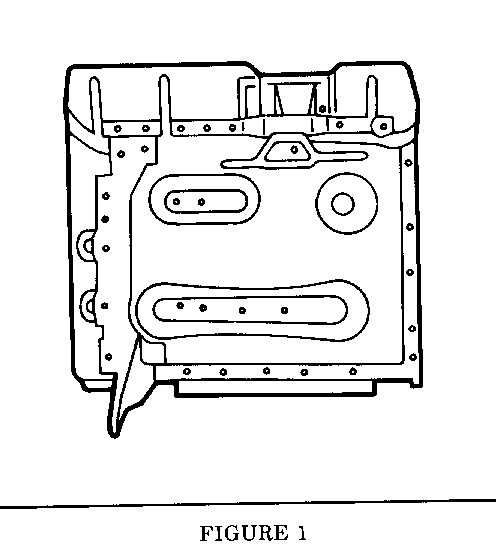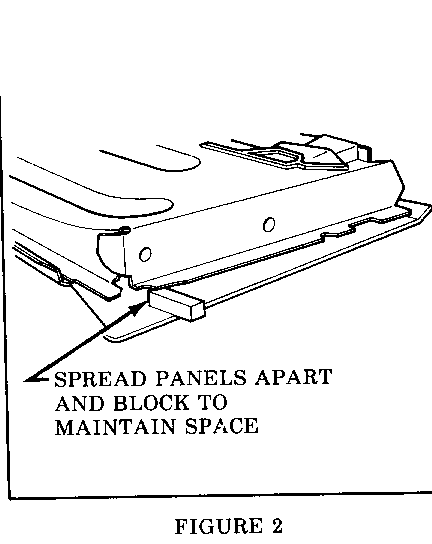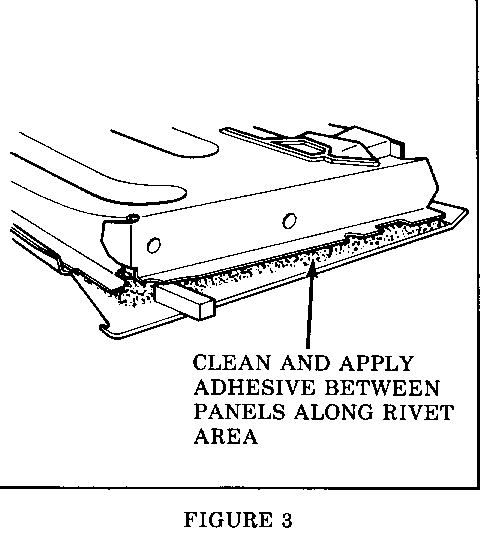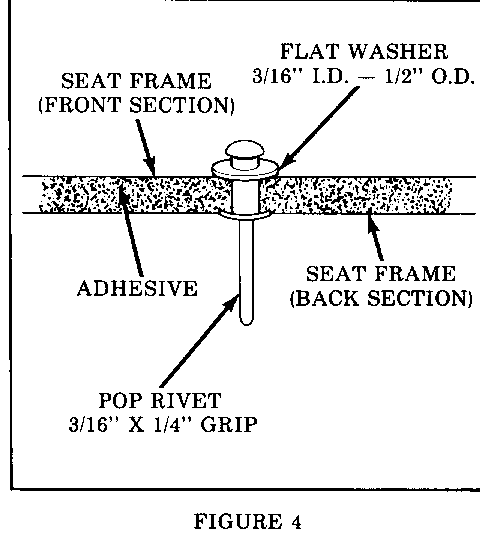SQUEAK NOISE IN FRONT SEAT ALUMINUM FRAME SERVICE

VEHICLES AFFECTED: 1984-1985 Eldorados and Sevilles --------------------------------
Some 1984 and 1985 Eldorados and Sevilles may experience a squeaking noise or rivet separation of the aeat back frame as rearward pressure is applied and released on the frame. This condition may be caused by the attachment between the front and rear sections of the aluminum frame and can be repaired as follows:
1. Remove the front seat back assembly from the vehicle following the procedure described in Section 9 of the Fisher Body Manual.
2. Place seat back assembly on clean, protected work surface.
3. Remove the seat back trim.
4. Inspect all rivets retaining front and rear section of seat back frame together, refer to Figure 1.
5. Remove all loose, broken or pulled rivets.
6. Spread front and rear panels of frame (where rivets have been removed) to allow access for cleaning and bonding of panels. Block to maintain space between panels, refer to Figure 2.
7. Clean aluminum surfaces of seat frame at mating area with wax and grease remover. Follow-up cleaning with denatured alcohol to remove all contaminants on aluminum surface.
8. Mix equal parts of 3M structural adhesive No. 8101 or equivalent thoroughly and rapidly apply bead of adhesive between the separated panels along rivet area of frame, refer to Figure 3. The structural adhesive will cure at varying speeds depending on temperature. The higher the temperature, the shorter the curing time.
9. Remove block separating panel allowing front and rear frame sections to come together.
10. Working from the back side of the seat panel, replace all removed rivets with 3/16 in. diameter, 1/4 in. long rivets as follows. Place a 3/16 in. inside diameter 1/2 in. outside diameter flat washer over the rivet from the front side of the seat back and install rivet to secure seat panel sections together, refer to Figure 4. Do this at each location where rivets were removed.
11. Allow structural adhesive to completely cure before proceeding.
12. Install seat back cushion onto frame and reinstall seat cover.
13. Reinstall seat back assembly into vehicle.




General Motors bulletins are intended for use by professional technicians, not a "do-it-yourselfer". They are written to inform those technicians of conditions that may occur on some vehicles, or to provide information that could assist in the proper service of a vehicle. Properly trained technicians have the equipment, tools, safety instructions and know-how to do a job properly and safely. If a condition is described, do not assume that the bulletin applies to your vehicle, or that your vehicle will have that condition. See a General Motors dealer servicing your brand of General Motors vehicle for information on whether your vehicle may benefit from the information.
